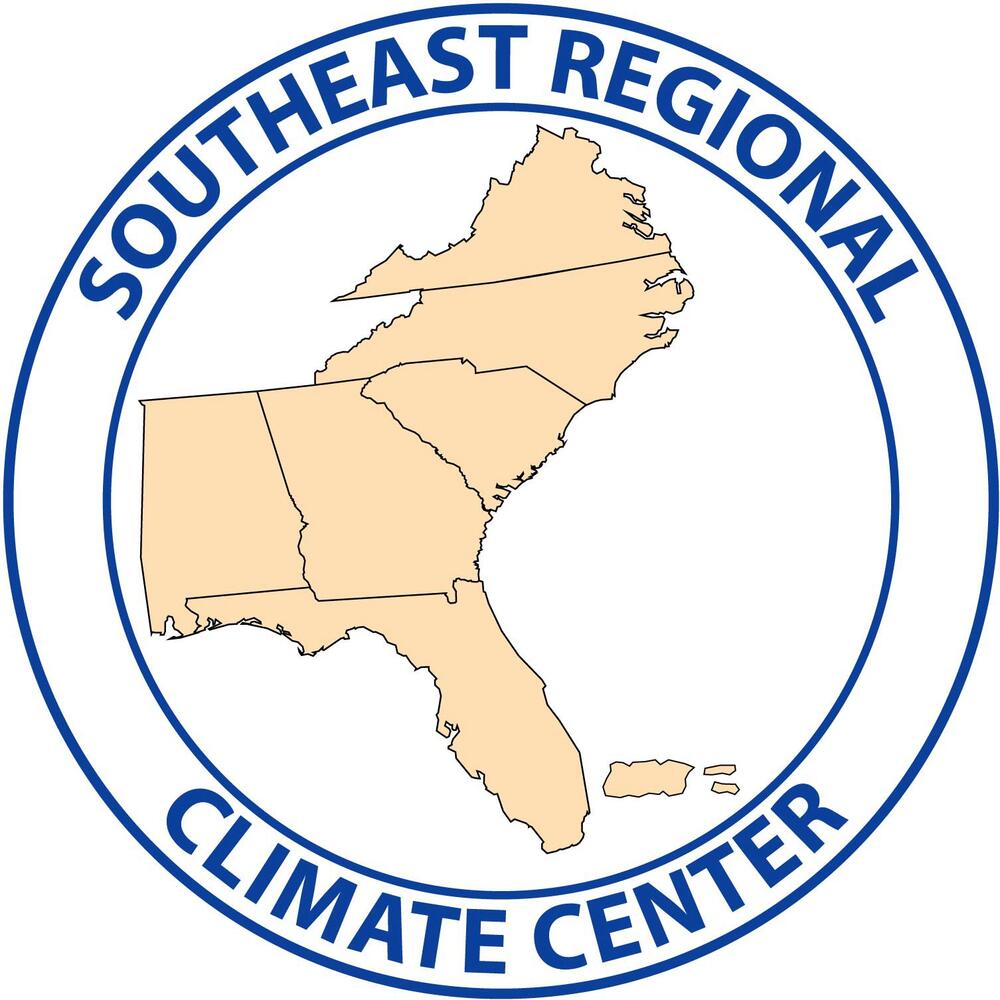
Section Branding
Header Content
What lost funding for weather data centers could mean for Georgia, according to climatologists
Primary Content
Last Thursday, April 17, data from four of the six National Oceanic and Atmospheric Administration’s Regional Climate Centers went offline.

Banners at the top of the centers’ homepages cited varying language referring to “lapsed” federal funds with no clear indication of whether that funding would be reinstated, or why it was paused in the first place.
Data housed and organized by the centers includes drought maps, air quality visualization and precipitation and temperature averages by state going back to the 1890s.
By Monday, April 21, the Southeast Regional Climate Canter website said the funding had been reinstated. "Our NOAA contract has been renewed,” it read. “We very much appreciate the support we received from our many users.”
The SERCC houses data for six U.S. states including Georgia, as well as Puerto Rico and the U.S. Virgin Islands.
Director of the Southeast Regional Climate Center, Charles Konrad, confirmed to GPB in an email that the SERCC has funding now through June 6, 2025, and that the Secretary of the Department of Commerce has signed off on additional funding for operations through next April.
He said the lapse in funding last week had to do with a lag in NOAA’s contract renewal process. Canceled grants and so-called reductions in force elsewhere have come alongside the Department of Government Efficiency’s clampdown on government contracts in search of "waste, fraud and abuse."
Later this year, Regional Climate Centers will have to reapply for another five-year contract with NOAA for funding, Konrad said in an email. That renewal process is, at this point, less certain.
“Given all of the cuts happening currently in NOAA, we are concerned that the RCC program might be cut [i.e., an RFP will not be issued],” Konrad wrote. “Therefore, we will need to work hard to promote the value of our products and services.”
The past, present and future of climate data
Regional Climate Centers, which celebrated 40 years in operation in 2023, are housed at universities and funded by NOAA through annual contracts. The agency is up against some major budget cuts by the federal government.
But it was still a surprise to Georgia’s state climatologist, Pam Knox, when she couldn’t access the data last week.
“I think we're good until next spring, but this is not an end process. It's not like they have a perpetual contract,” Knox said.
Knox runs the University of Georgia Weather Network, which publishes data on solar radiation, wind speeds, precipitation and more almost to the minute, from monitors placed all over the state.
The network is a vital resource on outdoor conditions for Georgia’s massive agricultural industry.
But Knox said even that network has its limitations. To do her job well, she relies on data from the Regional Climate Centers every day.
As a sort of conduit between the data and the public, all sorts of people email and call Knox for information about climate which she pulls from the federally funded RCC, she said. Knox hears from farmers looking to plan their planting season, civil engineers looking to design flood resistant roads, kids in school writing reports, and urban planners trying to determine how heat might affect air conditioning demands, for example.
“When people call and they have a question, I need to know where to find things,” Knox said. “Having access to the data quickly, and in a format that you can use to really help the people understand what they need, it's just so critical.”
She points out that the data is also used in real time to inform key decisions, such as those made by air traffic controllers.
In an op-ed written by Knox and Lee Ellenburg, a climatologist and research engineer at the University of Alabama, the two make a case for Regional Climate Centers by pointing out their importance to ground-level data collection and analysis, that makes public dissemination easy.
“There's no way any individual office can replicate the capacity of what the Regional Climate Center provides,” Ellenburg told GPB.
Especially in Knox’s case, she adds. Her office in Athens is a one-person operation, and she doesn’t have the time to download hordes of archival data as back up.
But NOAA is asking climatologists to do just that.
On an April 22 call of the Southeast Monthly Climate Webinar, experts from the Southeast Regional Climate Center, the National Integrated Drought Information System and the NOAA National Weather Service discussed precipitation patterns and trending climate phenomena like El Niño and La Niña.
Special guests Ana Keeney and John Callahan joined from NOAA’s Center for Operational Oceanographic Products and Services (CO-OPS). They walked through a new modeling project, meant to frequently track minuscule changes in ocean level, to better predict flooding.
About 40% of the U.S. population lives near the coast, Keeney said, which is getting riskier with sea level rise.
“Fingers crossed that those are maintained so that we can keep providing those really valuable data sets to people,” Keeney said. “And caveat, that if you're interested, please download now, because you never know how long we have anymore, unfortunately.”
Knox led her presentation with a wish for rain in Athens. The city had been dry for 11 days. She recognized the reinstated NOAA funding, too.
“We’re really happy to have them back,” Knox said.
After a short nod to large-scale uncertainty over the future of reliable weather data, Knox continued with her monthly agriculture update, explaining that peaches, blueberries, and strawberries are doing very well, and that Georgia’s Vidalia onions should hit produce shelves soon.
That network of 90 weather stations that Knox manages in Georgia could also be at risk. Knox said almost half of the funding for that work comes from NOAA. Though she has no indication that it’s going away, ongoing staffing cuts and budget talks are hard to ignore.
Meanwhile, what’s become challenging, Ellenburg said, is separating climate services from work on climate change. NOAA was asked earlier this year by the current administration to flag money in its budget spent on projects that include the words “climate” and “climate science," among others. That makes it easy to target even science that’s not looking at climate change specifically.
“There's just a lot that gets lumped into this commonality of words,” Ellenburg said, calling the policy on language “misguided.”
Current and historical data from Regional Climate Centers and other weather networks do inform policy decisions to mitigate disaster, Knox said, but it’s the smaller picture stuff that people rely on for day-to-day decision making.
“We're talking about climate that's impacting us now,” Knox said, “whether or not the trend is upward or downward or in circles.”



